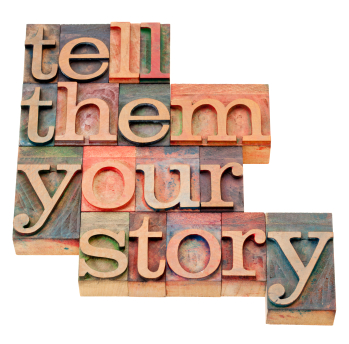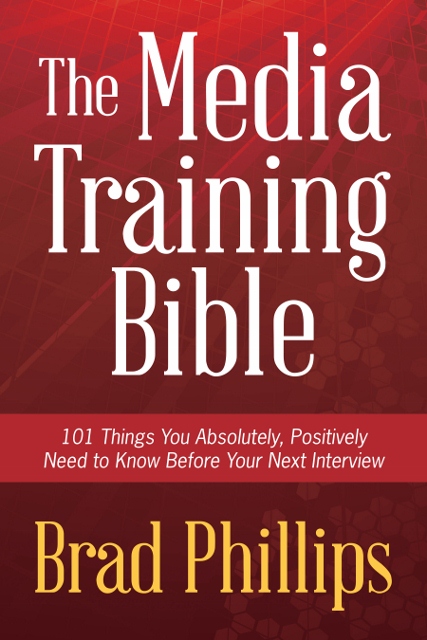Three Winning Stories That Will Wow Your Audiences
This is an excerpt from my new book, The Media Training Bible: 101 Things You Absolutely, Positively Need to Know Before Your Next Interview, now available in soft cover and all major e-book formats.
According to Howard Gardner, a professor at Harvard University, “Stories are the single most powerful weapon in a leader’s rhetorical arsenal.” Yet most people struggle to think of compelling stories that reinforce their messages.
That’s usually because they’re trying to think of a “big” story. In order to help people get unstuck, I tell them to think smaller. I encourage them to think of a single customer whose life was improved because of their product or a community that is enjoying the benefits of a new public school.
A story can be many things: your personal experience with a person, place, thing, or topic; somebody else’s experience; case studies in the news; or a historical or fictional example.
Take this message from a few lessons ago:
“By investing in infrastructure today, we will create hundreds of thousands of jobs, resuscitate the manufacturing sector, and build world-class highways that last for generations.”
A “story” to go with that message might say:
“The owner of one steel factory in Pennsylvania told me that his company is on the verge of bankruptcy, but that this bill would keep his factory open and his 200 workers employed. Plus, he said it would be nice to finally be able to build roads that don’t fall apart after every snowstorm!”
The message itself likely didn’t help you create a clear mental picture, but the story probably conjured up images of a factory floor, steelworkers, or potholed roads. Good stories do exactly that: they bring abstract messages to life through more tangible examples.
In Made to Stick, authors Chip and Dan Heath identified three types of “story plots” that are most commonly used to energize and inspire others. If you’re having a difficult time thinking of stories, these plots may help you brainstorm:
-
-
- The Challenge Plot: A protagonist overcomes a challenge and succeeds; examples include David vs. Goliath and rags to riches stories.
- The Connection Plot: A story about people who develop a relationship that bridges a gap; examples include racial, class, ethnic, or demographic differences.
- The Creativity Plot: A person makes a mental breakthrough, solves a long-standing puzzle, or attacks a problem in an innovative way.
Case Study: Hurricane Mitch Strikes Honduras
When Hurricane Mitch hit Honduras in 1998, thousands of people died and hundreds of thousands were left homeless.
By the time ABC News anchor Ted Koppel made it to the Honduran capital, the magnitude of the hurricane had already been widely reported. He knew a show highlighting the number of deaths wouldn’t add much to the story.
While walking around the city, he came across a man holding a shovel in a debris field. Koppel asked what he was digging. “My house used to be here, and it was destroyed,” the man said. “But I built the front door of my house with my own hands, and damn it, I want it back.”
That poignant moment became the centerpiece of a program called “The Door.” The show focused on that man – who he was, what had happened to him, and what he was planning to do next. By telling that small story well, the audience was able to extrapolate and understand the much larger disaster.
The Media Training Bible is available from Amazon here and for the Kindle here.
-




